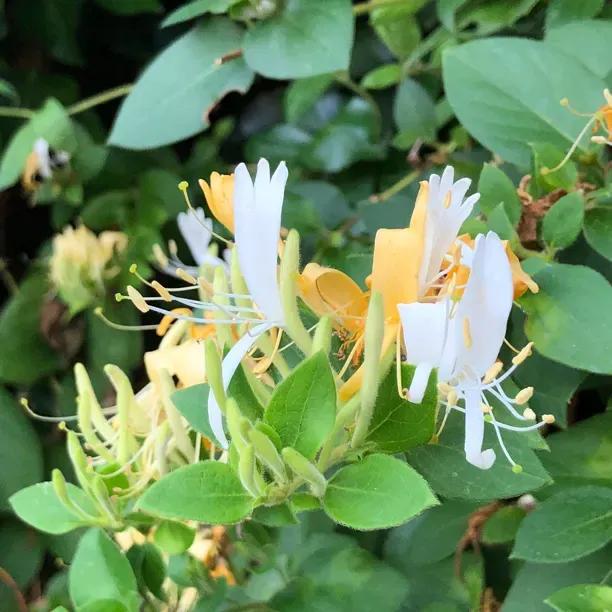Hall's Prolific Japanese Honeysuckle
Honest Delivery PricesLonicera japonica
- Bushy, semi/evergreen, mid-green leaves
- Lovely small creamy yellow trumpet flowers
- Flowering: Late March/April to August
- Full hardy
- Strong perfume
- Height 4m x Spread 3m
- RHS Award of Garden Merit
Recommended extras
Description
Honeysuckle Hall's Prolific
Lonicera Hall's Prolific is a great, disease resistant honeysuckle that will race to cover a sizeable area: brilliant for quickly screening an ugly fence, or creating a wildlife-friendly vertical feature.
The flowers are classic honeysuckle clusters of long, tubular sweetly perfumed blooms that open white and mature to a rich golden yellow. It's wonderfully long flowering; the blooms open from April until August, and are loved by bees and other pollinators. In autumn, it produces purple-black berries which are not edible.
The leaves are semi-evergreen. In practice, this means they'll survive milder winters, but will drop in a harsh winter, regrowing in spring.
Browse our honeysuckle range.
Features
- Height/Spread: 4m x 3m
- Colour: white maturing to rich yellow
- Shape: tubular flowers
- Scent: sweetly perfumed
- Flowering: April to August
- Group: climber
- Position: full sun to part shade
- RHS Award of Garden Merit
Growing Lonicera Halls Prolific
Hall's Prolific is seriously vigorous so give it space: ideally it needs a good-sized wall, sturdy fence, mature hedge or big, robust tree to clamber up and twine itself around. If you're growing it over a fence or wall, it will need trellis or wire support so that it can gain a foothold and twine with ease.
It prefers either sun or dappled shade, and appreciates good moist, well-drained soil, so dig in some garden compost or leaf mould when planting. You'll probably need to keep it in check by pruning hard in spring, then tidying up as needed throughout the summer.
In Your Garden Design
Think big with this honeysuckle when considering companion plants. Another honeysuckle, maybe the dark pink Dart's World, would look good or a clematis in a complementary colour, such as rich-pink Doctor Ruppel. Scent and colour wise it works beautifully with Hesperis matrionalis nearby to give a pure cottage garden feel, and it's an absolute classic winning combination with roses. Lupins would be superb too.
Planting Instructions
How to grow Lonicera 'Halliana':
Lonicera japonica 'Halliana' is best planted where the roots have a shady run although it will be happy in any situation and with any soil pH.Did You Know?
This variety is attributed to a breeder named George R Hall. Lonicera japonica is native to Japan, Korea and China. It was introduced outside of Asia in the 19th century.


